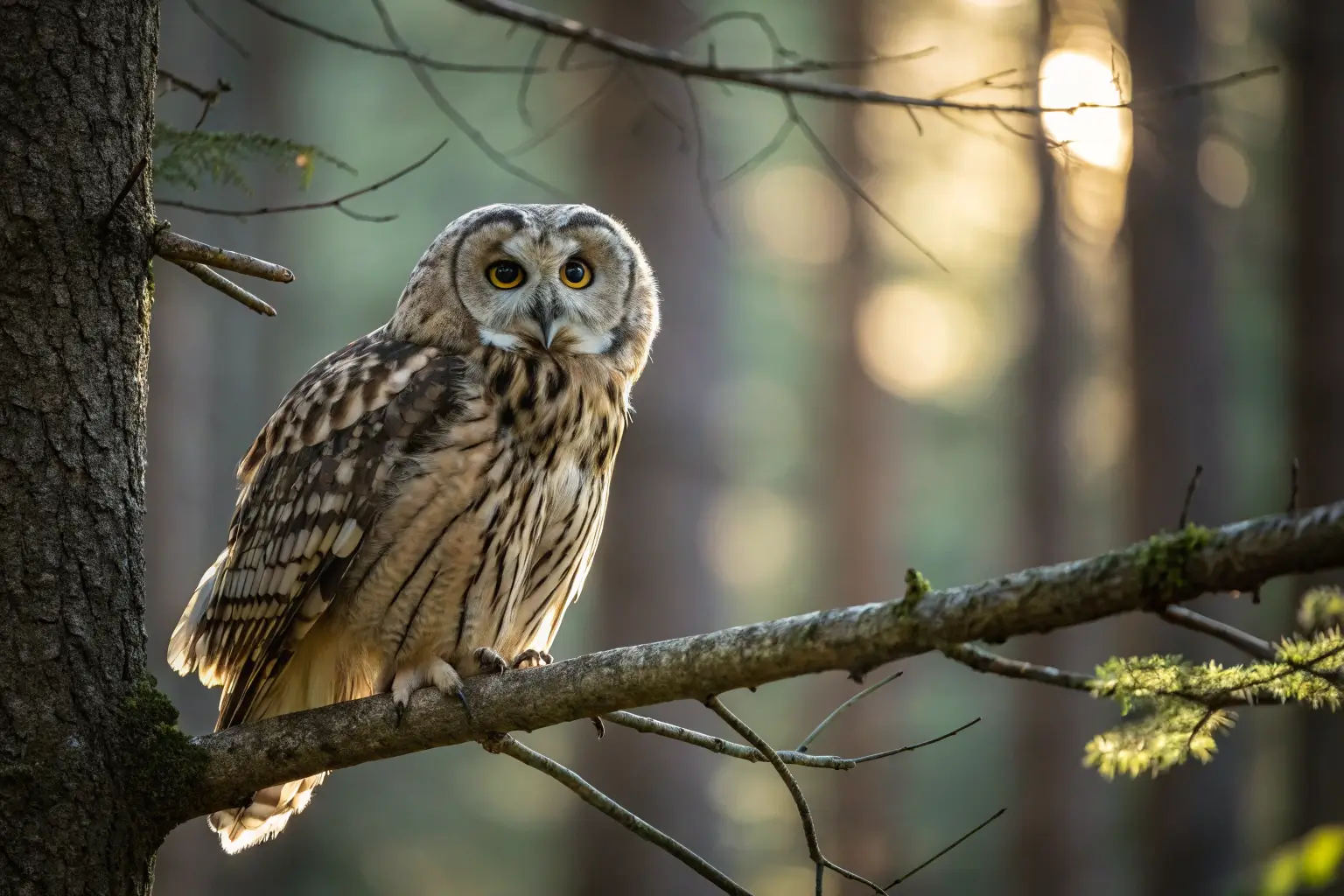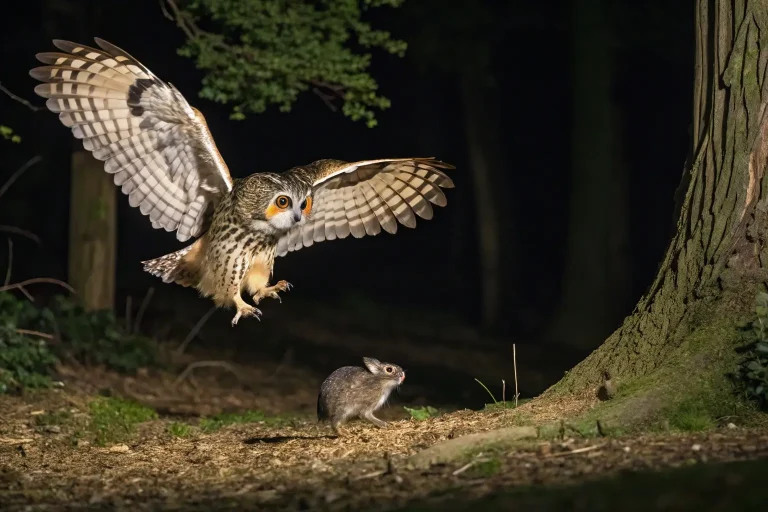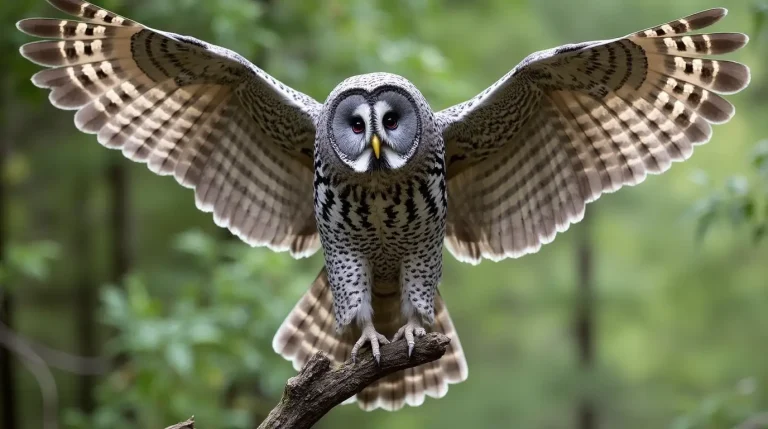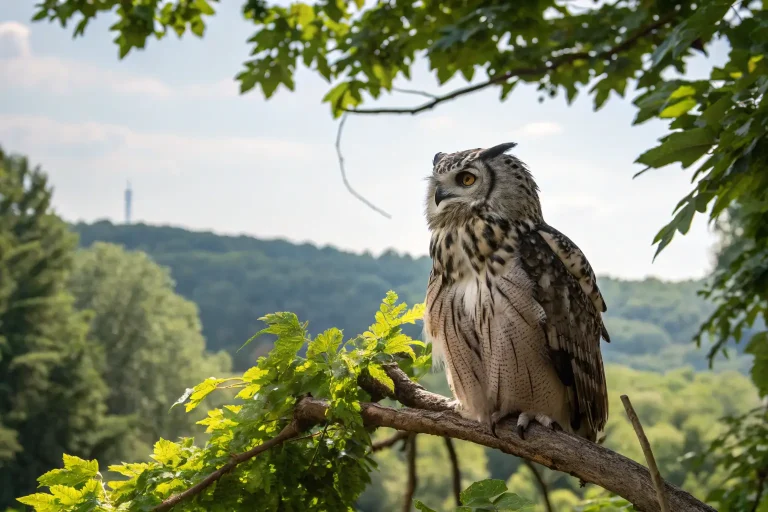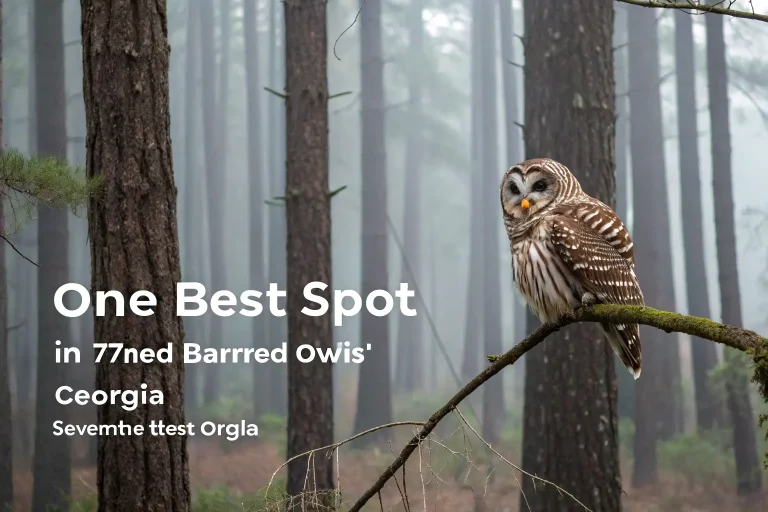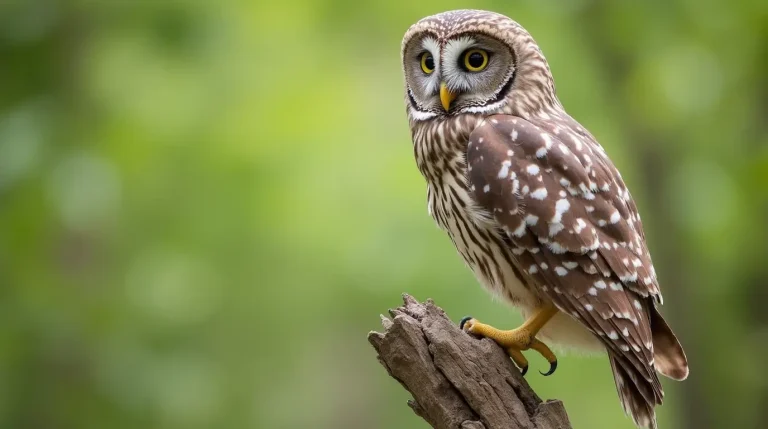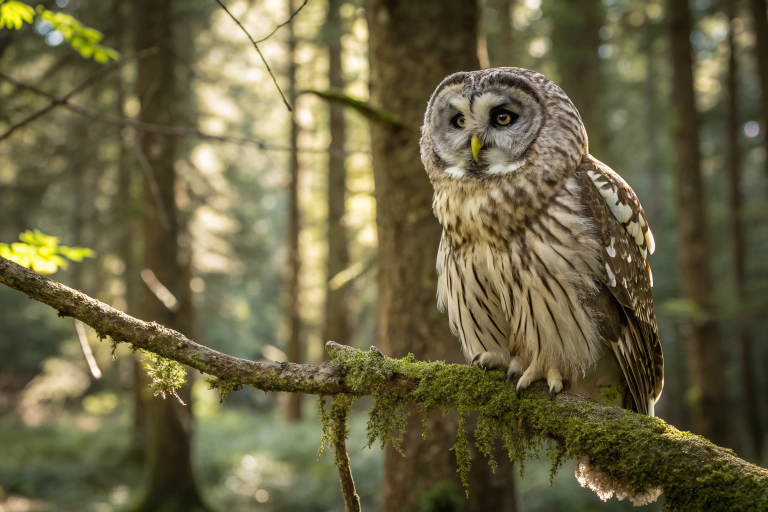The Owl Club: 7 Reasons Why It’s A Hoot for Bird Enthusiasts!
Curious about spotting and understanding owls? The Owl Club has 7 top reasons why it’s the perfect hub for bird enthusiasts looking to learn and explore. Discover the hoot!
Introduction
Owls, with their mesmerizing eyes and silent flight, have captivated human imagination for centuries. These nocturnal birds of prey represent wisdom in many cultures, yet remain mysterious due to their elusive nature. For bird enthusiasts seeking to deepen their knowledge and appreciation of these remarkable creatures, The Owl Club offers an unparalleled community and educational resource.
The Owl Club isn’t just another birding group – it’s a specialized community dedicated to owl conservation, education, and appreciation. Whether you’re a casual backyard birder or a serious ornithologist, understanding these magnificent nocturnal hunters can transform your perspective on wildlife and ecosystems.
Did you know that an owl can rotate its head up to 270 degrees? This fascinating adaptation allows them to observe their surroundings without moving their bodies – just one of the many owl facts you’ll discover through The Owl Club’s educational programs.
Species Overview
Scientific Name: Strigiformes
The order Strigiformes encompasses about 200 species of owls worldwide, divided primarily into two families: Tytonidae (barn owls) and Strigidae (true owls). The Owl Club provides members with comprehensive resources to identify and understand the taxonomic relationships between different owl species.
Physical Characteristics
Owls range dramatically in size, from the tiny Elf Owl at just 5-6 inches tall to the imposing Great Gray Owl with a wingspan exceeding 5 feet. Most species share distinctive characteristics that The Owl Club helps members recognize:
- Forward-facing eyes with binocular vision
- Facial discs that funnel sound to their ears
- Specialized feathers for silent flight
- Powerful talons for capturing prey
- Asymmetrical ear placement for pinpointing sounds
The Owl Club’s field guides and identification workshops help members distinguish between similar-looking species based on these physical traits, coloration patterns, and behavioral cues.
Subspecies
Many owl species have developed regional variations or subspecies across their range. For instance, the Great Horned Owl (Bubo virginianus) has at least 15 recognized subspecies throughout the Americas. The Owl Club’s expert-led sessions explore these variations, helping members understand how environmental factors influence adaptations within species.
Habitat and Distribution
Natural Habitat
Owls have successfully adapted to diverse environments around the world. Through The Owl Club’s field excursions, members explore various owl habitats:
- Dense forests (Spotted, Barred, and Northern Saw-whet Owls)
- Desert regions (Burrowing and Elf Owls)
- Arctic tundra (Snowy Owls)
- Urban environments (Barn and Screech Owls)
The club’s habitat restoration projects also provide practical opportunities for members to improve local owl habitats through nest box installations and native plant restorations.
Geographic Range
From the Arctic to the tropics, owls inhabit nearly every terrestrial habitat except Antarctica. The Owl Club maintains an impressive database of regional owl populations, helping members know where and when to spot specific species. Their seasonal migration tracking programs allow members to participate in citizen science initiatives while enjoying owl sightings during peak movement periods.
Adaptations
Owls possess remarkable adaptations that The Owl Club highlights through their educational programs:
- Specialized flight feathers with serrated edges that reduce air turbulence
- Exceptional low-light vision with eyes that contain five times more rod cells than human eyes
- Facial feather arrangements that act as parabolic sound collectors
- Reversible outer toes for improved gripping strength
The club’s photography workshops focus on capturing these unique adaptations, while their biomimicry seminars explore how owl adaptations have inspired human innovations.
Diet and Feeding Habits
What It Eats
The Owl Club’s dissection workshops (using ethically collected owl pellets) reveal the diverse diets of different owl species:
- Small mammals (mice, voles, shrews)
- Birds and occasionally other owls
- Reptiles and amphibians
- Insects and arthropods
- Fish (specialized species like Fishing Owls)
Members learn to identify prey remains in pellets, contributing valuable data to The Owl Club’s citizen science initiatives tracking local prey populations.
Hunting or Foraging Behavior
The hunting techniques of owls fascinate Owl Club members. The club’s night vision equipment rentals and guided nocturnal excursions provide rare opportunities to observe:
- Silent flight approaches using specialized wing feathers
- Ambush hunting from strategic perches
- Ground hunting by species like Burrowing Owls
- The remarkable ability to locate prey by sound alone, even beneath snow
The club’s sound recording workshops allow members to capture and analyze the vocalizations owls use during hunting and territorial displays.
Dietary Needs
The Owl Club’s conservation programs emphasize the importance of healthy prey populations for owl survival. Members learn how owls serve as indicator species – their dietary needs reflecting ecosystem health. The club’s habitat management seminars teach landowners how to support robust prey populations through sustainable land management practices.
Behavior and Social Structure
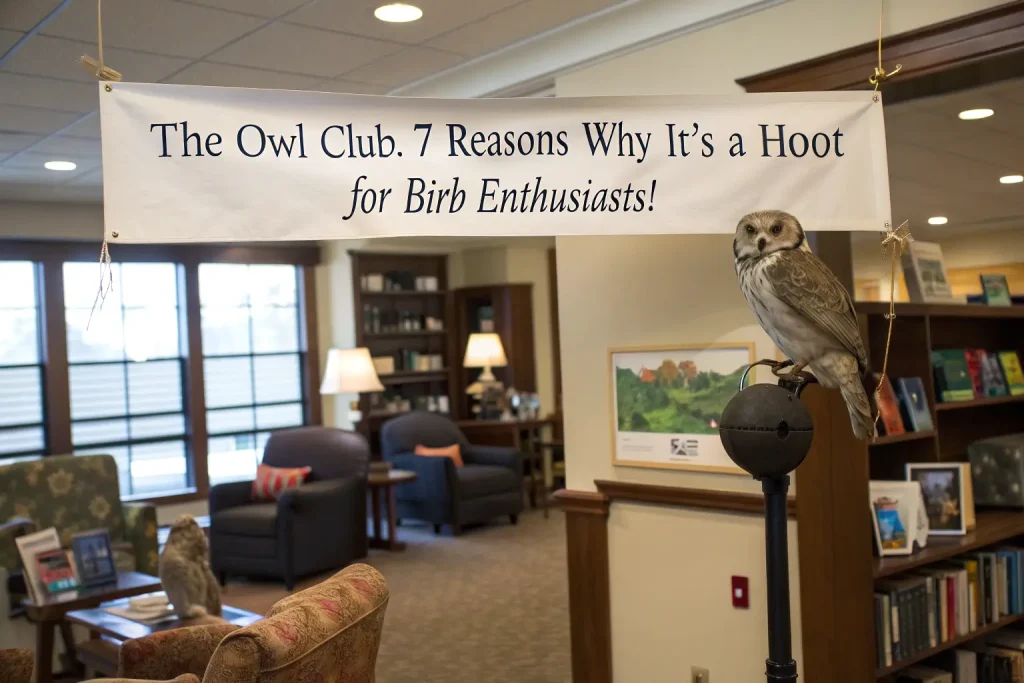
Social Behavior
While many assume all owls are solitary, The Owl Club reveals the nuanced social behaviors across species:
- Monogamous pair bonding in most species
- Communal roosting in some species like Long-eared Owls
- Family group hunting instruction for fledglings
- Territorial defense and neighbor recognition
The club’s long-term monitoring programs have documented fascinating social dynamics, including cooperative hunting among mated pairs and complex territorial negotiations between neighboring owls.
Communication
Owl vocalizations extend far beyond the familiar “hoot.” The Owl Club’s sound library contains over 500 distinct owl calls, helping members identify:
- Territory announcement calls
- Mate attraction songs
- Warning signals
- Food begging calls from young
- Contact calls between mates
Their interactive workshops teach members to recognize and interpret these vocalizations in the field, adding depth to nighttime listening experiences.
Mating and Reproduction
The Owl Club’s nestcam network provides unprecedented views into owl family life:
- Elaborate courtship displays including food offerings and mutual preening
- Nesting habits ranging from tree cavities to ground nests
- Asynchronous egg hatching strategies
- Development stages from helpless chicks to fledglings
- Parental care and hunting instruction
Members can “adopt” an owl family through the club’s nestcam program, receiving updates and educational materials about their adopted family’s progress.
Conservation Status
Endangerment Level
The Owl Club maintains current information on conservation status for all owl species, highlighting concerns for numerous threatened populations:
- Critically Endangered: Forest Owlet (fewer than 250 mature individuals remain)
- Endangered: Blakiston’s Fish Owl and Madagascar Red Owl
- Vulnerable: Spotted Owl and Philippine Eagle-Owl
- Near Threatened: Short-eared Owl and Flammulated Owl
Their conservation dashboard tracks population trends, helping members understand which species need immediate attention.
Threats
Through The Owl Club’s advocacy programs, members learn about the primary threats facing owls globally:
- Habitat loss and fragmentation from deforestation and development
- Secondary poisoning from rodenticides
- Vehicle collisions, particularly during hunting near roadways
- Climate change disrupting prey availability and breeding cycles
- Light pollution interfering with hunting and breeding
The club’s threat reduction workshops provide practical strategies for minimizing these impacts in members’ local communities.
Conservation Efforts
The Owl Club doesn’t just educate – it acts. Members participate in numerous conservation initiatives:
- Nest box construction and installation programs
- Habitat restoration projects on public and private lands
- Rodenticide reduction campaigns
- Wildlife corridor preservation advocacy
- Rescue and rehabilitation partnerships with wildlife centers
Their annual “Give a Hoot” fundraiser has generated over $500,000 for owl conservation projects worldwide.
Interesting Facts
The Owl Club’s “Owl Trivia Night” events showcase fascinating owl facts that captivate members:
- An owl’s eye is not a true “eyeball” – it’s an elongated tube held in place by bones called sclerotic rings
- The heart-shaped face of barn owls inspired their scientific name, Tyto, from the Greek word for “goddess”
- The Elf Owl, smallest in the world, weighs less than a golf ball
- Some owl species, like Snowy Owls, are active during daylight hours
- A group of owls is called a “parliament”
- Owls lack the brain structure for eye movement, which is why they turn their entire heads
- Baby owls sleep face down because their heads are too heavy for their bodies
The club’s “Owl of the Month” program highlights these and other fascinating adaptations through detailed newsletters and virtual presentations.
Tips for Caring for Owls
While The Owl Club emphasizes that owls are wild animals unsuitable as pets, they provide guidance for indirect care:
- Creating owl-friendly habitats with mature trees and open hunting areas
- Installing appropriate nest boxes based on local species
- Eliminating rodenticides and dangerous pesticides from your property
- Reducing outdoor lighting during breeding season
- Supporting wildlife rehabilitation centers that care for injured owls
Their “Backyard for Raptors” certification program recognizes members who create exemplary owl-friendly environments on their properties.
Role in the Ecosystem
Ecological Importance
The Owl Club educates members about owls’ crucial ecosystem functions:
- Natural rodent control (a single Barn Owl family can consume over 3,000 rodents annually)
- Regulation of mesopredator populations
- Nutrient cycling through pellet deposition
- Indicator species status for ecosystem health
- Creation of nesting cavities later used by other wildlife
Their ecosystem modeling workshops demonstrate how removing owls from an environment can trigger cascading ecological effects.
Impact of Decline
Through The Owl Club’s ecosystem health seminars, members understand the consequences of owl population declines:
- Rodent population explosions damaging crops and spreading disease
- Altered forest composition from increased herbivore pressure
- Loss of biodiversity in areas dependent on owl-created cavities
- Disruption of food webs where owls serve as both predators and prey
- Diminished ecological resilience to climate change impacts
The club’s “Silent Night” campaign highlights the ecological consequences of a world with fewer owls.
7 Reasons Why The Owl Club Is Perfect for Bird Enthusiasts
1. Expert-Led Field Excursions
The Owl Club organizes monthly owl-prowls in prime habitats, led by seasoned ornithologists who know exactly where to find local species. These nighttime adventures provide rare opportunities to observe wild owls engaging in natural behaviors – something casual birders might never experience alone.
2. Cutting-Edge Research Participation
Members participate in legitimate scientific research through The Owl Club’s citizen science initiatives. From pellet collection to territory mapping and migration tracking, members contribute valuable data to owl conservation while developing advanced field skills.
3. Specialized Equipment Access
The Owl Club maintains an impressive inventory of specialized equipment that members can borrow:
- Professional-grade night vision and thermal imaging devices
- High-sensitivity wildlife recording equipment
- Advanced spotting scopes optimized for low-light conditions
- Camera traps with AI-powered owl detection
This equipment access allows members to observe and document owl behavior that would otherwise remain invisible.
4. Conservation Impact
Beyond observation, The Owl Club provides meaningful conservation opportunities. Members restore owl habitats, advocate for owl-friendly policies, and participate in nest box programs that have measurably increased local owl populations in many regions.
5. Educational Resources
From identification workshops to detailed webinars on owl anatomy, behavior, and ecology, The Owl Club offers educational resources that transform casual interest into expertise. Their lending library contains virtually every book ever published about owls.
6. Supportive Community
The Owl Club connects members with fellow enthusiasts at all skill levels. Regional chapters host regular meetings, while online forums facilitate knowledge sharing and planning for owl observation outings. Many members develop lifelong friendships through their shared passion.
7. Exclusive Owl Encounters
Through partnerships with wildlife rehabilitation centers, The Owl Club occasionally offers members up-close encounters with ambassador owls that cannot be released back to the wild. These ethical interactions provide unforgettable experiences while supporting rehabilitation efforts.
Conclusion
The Owl Club transforms casual bird watching into a profound connection with one of nature’s most captivating creatures. Through expert guidance, specialized equipment, and meaningful conservation work, members develop an appreciation for owls that extends beyond simple observation to understanding their ecological significance and conservation challenges.
As owl populations face mounting pressures from habitat loss and environmental change, communities like The Owl Club play an essential role in ensuring these magnificent birds continue to thrive. By joining, you’re not just pursuing a fascinating hobby – you’re becoming part of the solution for owl conservation.
Whether you’re drawn to their silent flight, mysterious calls, or simply their captivating gaze, The Owl Club offers the perfect pathway to deepen your appreciation and knowledge of these remarkable birds. Give a hoot – join The Owl Club today and discover why owl enthusiasts consider it the ultimate community for exploring, understanding, and protecting the night’s most fascinating predators.
Frequently Asked Questions
Does The Owl Club only focus on local owl species?
No, while The Owl Club organizes local field excursions for regional species, their educational programs, research initiatives, and conservation efforts span owl species worldwide. Many chapters organize international trips to observe owls in diverse habitats.
Do I need previous birdwatching experience to join The Owl Club?
Absolutely not! The Owl Club welcomes members at all experience levels. Beginners receive mentoring from experienced members, and the club offers introductory workshops specifically designed for those new to owl watching.
How does The Owl Club help with owl conservation?
The club supports conservation through habitat restoration projects, nest box programs, educational outreach, advocacy for owl-friendly policies, and fundraising for research initiatives. Members can participate at whatever level matches their interests and availability.
Can children join The Owl Club activities?
Yes! The Owl Club offers family-friendly programs and a “Junior Hooters” program specifically designed for young owl enthusiasts. Many field activities are appropriate for children accompanied by adults.
Are The Owl Club’s nighttime excursions safe?
Safety is a priority for all Owl Club activities. Field excursions are led by experienced guides familiar with the terrain, and participants receive safety briefings before each outing. The club maintains appropriate guide-to-participant ratios and provides communication devices for all outings.
How can I find The Owl Club chapter nearest to me?
Visit The Owl Club’s website and use their chapter locator tool, which will show you the nearest local groups along with meeting schedules and upcoming events. If no chapter exists in your area, they offer resources to help start a new one!
What equipment do I need to start owl watching with The Owl Club?
While specialized equipment enhances the experience, beginners need only basic items: binoculars, weather-appropriate clothing, and a headlamp with a red light setting. The Owl Club provides equipment loans for members wanting to try specialized gear before purchasing.

